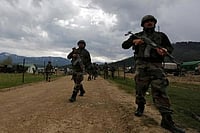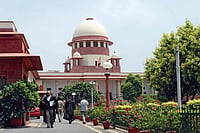Rising global temperatures, fossil fuels phase out, and the Paris agreement review will be among the key agenda items at the 28th Conference of Parties, or COP28, set to get underway in Dubai this Thursday, November 30.
The annual United Nations Climate Change Conference is widely expected to serve as the stage for critical debates, negotiations, and a comprehensive review of the member countries' overall progress toward the ultimate goal of mitigating climate change. Among the significant points of discussions will be the “loss and damage” fund which will be carried over from last year’s COP27 in Egypt.
What is the “loss and damage” fund?
The world's poorest and least developed nations contribute the least to climate change, yet bear the brunt of its impacts, experiencing severe floods, extreme heatwaves, and other climate-related disasters.
USA and China are the world’s biggest polluters and greenhouse gas emitters. China is responsible for 27 per cent of the world's greenhouse gases, while the USA accounts for 11 per cent. However, the repercussions of these emissions disproportionately affect poor nations, which lack the resources to effectively address the severe consequences of such environmental activities.
African countries like Chad, Sudan and South Sudan have been grappling with alternating periods of severe droughts and floods. Pakistan has seen about US$30 billion in damages from severe flooding and Madagascar has been hit by four tropical cyclones in the span of just one year.
According to a UN report, from 1970 to 2019, climate-change induced natural hazards accounted for 50 per cent of all natural disasters, 45 per cent of all reported deaths and 74 per cent of all reported economic losses.
Over two million people died in these climate-related disasters, which also resulted in about $3.64 trillion in losses for the global economy. Also, more than 91 per cent of the deaths occurred in developing countries.
Given the rise in climate disasters, the setting up of a “loss and damage” fund was discussed at COP27 wherein money from rich countries, which are responsible for most of the climate crisis, would go to poor countries which have been hardest hit by the crisis.
Is this a new concept?
This is not a novel concept and has been a subject of debate for several decades. As far back as 1991, delegates from the small island nation of Vanuatu, which is home to over 300,000 people in the South Pacific, cited “Loss and Damage” at the UN Framework Convention on Climate Change (UNFCCC).
According to the United Nations Environment Programme, “Loss and damage refers to the negative consequences that arise from the unavoidable risks of climate change, like rising sea levels, prolonged heatwaves, desertification, the acidification of the sea and extreme events, such as bushfires, species extinction, and crop failures.”
An agreement to set up the fund was reached at the previous year’s climate summit but no decisions have been made on who should pay into the fund, where this money will come from and which countries will benefit.
What is the proposed framework?
A Transitional Committee with 14 developing-country members and 10 developed-country members was appointed by the UN to deliberate upon a framework for the loss and damage fund, following the COP27 summit in November last year.
The committee made recommendations for what the fund should look like earlier this month after nearly a year of discussion. Developing countries aimed to outline the necessary financial support for loss and damage, as well as establish clear guidelines on contributors to the fund. Both points were countered by developed nations.
The draft proposal suggested placing the fund within the World Bank for an initial period of four years, after which it could be moved elsewhere. Developing countries consented to this arrangement despite some reservations. The draft proposal is subject to re-negotiation during COP28 if countries object to the recommendations of the Transitional Committee.


























